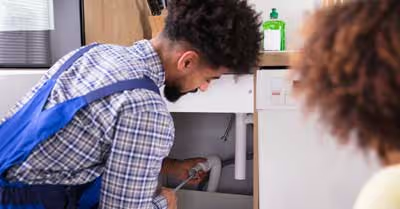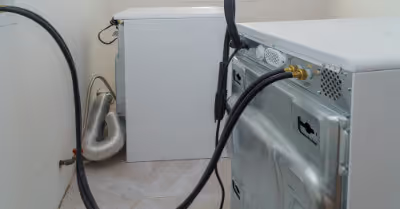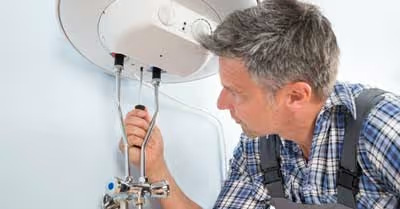Table of Contents
Connecting Your Device to Your TV Using an AV Cable
For this connection what you will need is a Lightning Digital AV Adapter, a Lightning connector, and an HDMI cable.
- You need to first connect your HDMI cable to your Digital AV Adapter. Since the HDMI cable has to run from the back of your TV to your iPhone, you need to ensure that your cable is long enough.
- Then connect the other end of the HDMI cable to your TV input. Look for a free HDMI port on your TV. You can find it on the sides or behind it. Check out the HDMI label on it.
- Use your Lightning connector to plug your adapter to the device's lightning port/ Then turn on your device.
- The adapter allows you to connect a USB cable to your device. This gives it power so that your battery is kept from running low.
- With the TV control panel, select the correct HDMI port where you have plugged the cable into. The TV will then show what is on your device's display in 1080p HD.
The Home Screen image and most apps will look quite low resolution on your TV screen. This is because there is an upscaling of your iPad's resolution to a larger screen. But when you start playing your videos, you will have a full resolution shown on your TV.
Lightning connectors do not work with the original iPad, iPad2, or iPad 3. For this reason, you need to buy an AV digital adapter with a 30-pin port for these older iPad models.
Once the AV Adapter has been connected to your iPhone or iPad and the HDMI cable plugged into your TV, you now can play your iTunes videos, watch movies on Netflix, and do whatever you want on your TV.
If you find the Apple AV Adapter too expensive, you can find many third-party lightning-to-HDMI cables sold online. They are less expensive and easy to connect.
However, third-party cables sometimes don't work for streaming services like Netflix, Hulu, Amazon Prime Videos, HBO, or on-demand videos from Comcast, Xfinity, and DirectTV. They don't have the HDCP or High-bandwidth Digital Content Protection which helps prevent piracy of HD digital content.
Connecting Your Device Using a Plug and Play Cable
A Plug and Play cable has an HDMI side, a USB connection, and a Lightning side for your device. This is for TVs that allow you to connect a USB to your phone. With an AV adapter, you need 2 cables, but with a plug and play cable, you only need to buy one. However, certain HDMI cables will not support paid subscriptions and apps.
- On your TV, connect both the HDMI cable and the USB on different ports. Look for ports with HDMI and USB label on it.
- Then connect the lightning side to your device.
- Choose the HDMI output from the list on your TV.
- You can now start watching what is on your phone on your TV.
Connecting with Component and Composite Cables (30-pin)
An older iOS device will have a 30-pin charging port. The problem with this is that Apple is no longer selling its own 30-pin-to-HDMI adapter. Your only option is to find third-party sellers.
An older tube TV or a TV that does not support HDMI can be connected with Apple's Composite AV cable (30-pin). The problem with this connection is that a lighting-to-30-pin adapter can only handle audio output. You cannot connect it with newer iPhones for video playback and images.
Component adapters can give you a slightly better picture but are only also available for the old 30-pin adapter. Component and composite cables also don't support display mirroring mode on the iPad. They also fall short of 720p video so it does not have quality compared to using a digital AV adapter or Apple TV.
Connecting an iPad with a VGA Adapter
If your TV has a VGA output, then you can use an Apple Lightning-to-VGA adapter to hook up a device to your TV. VGA adapters support the Display Mirroring mode. The problem is that sound is not transferred. So, if you need to listen then you will have to do it through either your iPhone or iPad's built-in speakers or external speakers.
Connecting Your iOS Device to Your TV Wirelessly
It is possible not to use wires to connect your device to your TV. You can connect it wirelessly. You need an Apple TV.
If you own an Apple TV, then you will have an easier way to connect since it is wireless and you only need a Wi-Fi connection.
- Make sure that your device and your Apple TV are connected to the same Wi-Fi network.
- Your TV should be displaying your Apple TV.
- You then need to swipe the screen down from the right side to open the Control Center. This is for iPhone X or newer models or an iOS12 iPad. If you have an older iPhone or iPad model, you need to launch the Control Center by swiping it up from the bottom.
- Tap Screen Mirroring, and then choose Apple TV. If you have several Apple TVs in your home, you should label them for every room. If you are using iOS 10, tap AirPlay, then select Apple TV.
- A four-digit code will appear on the screen of your TV which you need to enter in your iOS device. This is a default procedure that is done only once for every device.
- Your Home Screen will now appear on your TV mirroring your iPad's screen. If you simply want to stream media such as music or videos you have purchased on iTunes, you can just use AirPlay.
- You can disconnect your TV by choosing "Stop Mirroring" from your Control center.
Mirroring is not really necessary now that there are a lot of audio and video apps available. You can instead simply choose the icon for AirPlay to playback any audio or video files. The icon resembles a TV that sits on a triangle. After selecting AirPlay, select Apple TV from the list.
If you use AirPlay from your Control Center, you will consume less battery than if you use mirroring. With AirPlay, you can use your iPhone or iPad to do other tasks while your TV is playing your music or video.
Connecting with an Android Stick or other Mirroring Apps
You can find many other ways of connecting your iOS device to your TV. One way is by plugging an Android-powered TV stick in the back of your TV. The stick will be able to play music and video from built-in apps on your device by installing the Kodi media server app. Just use the Airplay button. However, protected video streaming and screen mirroring are not supported by this device.
Apple adapter cables are expensive. If you don't want to use them and you don't own an Apple TV, there are mirroring apps that you can use to share your iOS device's screen on devices like Roku, Fire TV, and Chromecast.
iOS screen recording features are used in these apps. These can capture videos and send them to the streaming video. For the Roku and Fire TV, you need to download a separate app on these players. You will be guided by iOS throughout the process.
These apps have paid versions. If you upgrade to these then you are free from experiencing poor video quality, delays, and sitting through ads before you can mirror. But you can easily use these apps for viewing photos, websites, social media feeds, and more.
You can also use the Google Chromecast or Chromecast Ultra. These are inexpensive dongles that can easily be connected to the HDMI port of your TV. This can be used for video streaming. However, the screen of your iOS device cannot be mirrored using this.
Navigating the streaming media apps that are supported by Chromecast is possible using your iOS device. Your iPhone then becomes a remote control for YouTube, Netflix, Hulu, and others.
Pictures, audio, video, and information can also be sent through Chromecast to your TV from the apps that it supports. Content can be played directly on your TV through these apps. This is why it is not necessary to mirror the display on your iOS devices.
Just look for the Cast button in the apps that Chromecast supports so that you can stream media directly instead of mirroring your device's display.
- After you have plugged the dongle into your TV, use the Google Home companion app to connect the device with your wireless network.
- The Chromecast icon will then appear in the supported apps.
- Tap it and select Chromecast from the list.
- When media playback begins, it will be shown on your TV screen only and not on your iOS devices.
With the Roku mobile app, it is possible to share videos, photos, and music from your iOS device. To get started, go to the 'media' tab after installing it.
A supported Roku device will enable you to add the Apple TV channel.
- This can be done by pressing Home, then scroll to Streaming Channels.
- Open the Channel Store and select Search Channels.
- Highlight Apple TV, press OK, and select Add Channel
- You can now access Apple's iTunes store to rent or buy movies now that the Apple TV Channel is installed.
You can also watch Apple content on the Amazon Fire TV. You follow a similar process to Roku. With a Fire TV stick, you can access the Apple TV app so that you can rent or buy movies from iTunes. You can also access all the streaming content that Apple is offering to subscribers.
To get an Apple TV app on your Amazon Fire, select the search icon, then search for Apple TV. Install the app so that you can start using it.
Viewing Videos or Photos on Your TV
You can now also view your videos or photos from your iOS device on your TV. Here are the steps.
- Open the photos app.
- Choose the share button.
- Choose the video or photo you want by tapping. A blue circle with a white tick will appear.
- Then select AirPlay from the menu and select Apple TV.
- Your photos will then appear on your TV screen. You can move your photos by swiping left or right on your iOS device's screen.
Playing Music on Your TV
You can also listen to music stored on your device to your TV.
- Choose the track or album you want to listen to.
- Access Control Center and choose AirPLay
- Then select Apple TV.
- You can now listen to your favorite songs through your TV.
You can now start watching videos or look at your photos on your TV screen by connecting your phone or iPad to your TV using the methods given above. When you have done this, you can start viewing everything that is on your phone, on your TV. You don't just get to watch videos; you can also mirror the screen of your iPhone or iPad. Whatever you want to be seen on your big TV screen, it is possible with these connections.
Recent Articles
















